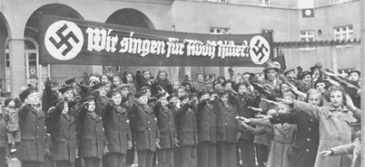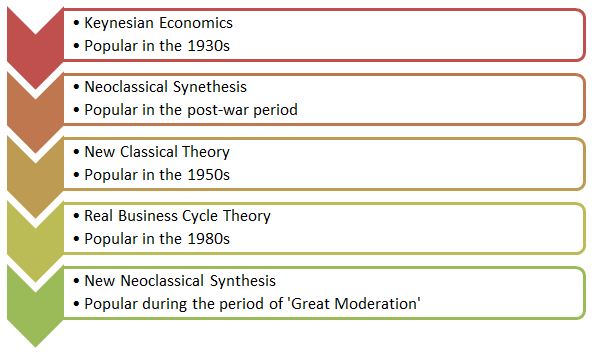Bowling for Fascism: Social Capital and the rise of the Nazi Party in Weimar Germany, 1919-33
Shanker Satyanath (NYU), Nico Voigtlander (UCLA) and Hans-Joachim Voth (Zurich)
URL: econpapers.repec.org/paper/zureconwp/147.htm
Abstract:
Social capital typically leads to positive political and economic outcomes. A growing literature also emphasizes the potentially “dark side” of social capital. This paper examines the role of social capital in the downfall of democracy in interwar Germany. We analyse Nazi Party entry in a cross-section of cities. Dense networks of civic associations such as bowling clubs, choirs, and animal breeders facilitated the Nazi Party’s rise. Towns with one standard deviation higher association density saw at least one-third faster entry. All types of associations – veteran associations and non-military clubs, “bridging” and “bonding” associations – positively predict NS Party entry. These results suggest that social capital aided the rise of the Nazi movement that ultimately destroyed Germany’s first democracy. We also show that the effects of social capital depended on the institutional context – in Prussia, where democratic institutions were stronger, the link between party entry and association density was markedly weaker.
Reviewed by Ronan McGarry (final-year BSc Economics student, Queen’s University Belfast)
This NBER working paper was distributed by NEP-HIS-2013-07-15. The authors seek to clarify and quantify the role that social capital played in the rise of the Nazi Party and the ensuing downfall of the democratic Weimar Republic. In order to do so, econometric analysis of the link between local clubs/societies and Nazi party membership is conducted. The authors also seek to add to the current literature on the ‘dark side’ of social capital (Putnam 1995).
The literature on positive and negative outcomes as a result of high levels of social capital is conflicting. In his 1995 essay ‘Bowling Alone’, Robert Putnam wrote that communities with high levels of social capital ‘promote participatory democracy’. However, Riley (2005) would refute this and point to society-rich Northern Italy – which turned fascist in the 1930s. Furthermore, Chambers & Kopstein (2001) point out that after the collapse of the USSR, Serbs began ethnically cleansing their Balkan neighbours, even though Serbia had fairly intense levels of social capital. This paper turns its attention to Weimar Germany in an effort to shed more light on the topic.
It must be noted that the authors were not the first to tackle Weimar Germany’s fall in terms of social capital. However, they are the first to have done so econometrically. Berman (1997) showed that ‘a robust civil society helped scuttle the twentieth century’s most critical democratic experiment, Weimar Germany’ explaining that the ‘high levels of association served to fragment rather than unite German society.’ This paper builds on Berman’s conclusion by comparing numerically the rates of civic association intensity in German towns and cities against the rate of Nazi Party membership uptake; whilst controlling for various other political and socio-economic variables.
The authors collected data on 111 German towns and cities in modern-day Germany. One problem here is that Weimar Germany’s eastern border was much further to the east than modern-day Germany’s. This means that missing from this dataset are cities like Breslau (now Wroclaw, Poland) and Konigsberg (now Kaliningrad, Russia). Both of these cities were very Nazi-friendly – the Nazis received 44% of Breslau’s vote in 1932 (Davies & Moorhouse, 2011) and 54% of Konigsberg’s in 1933 (Jasinski, 1994) and so their exclusion from the dataset is disappointing in terms of accuracy.
Following this, the authors begin the presentation of their findings with an interesting comparison of two similar towns – Kleve and Coburg. Both were similar in size, but with large differences in the presence of associations. Coburg was far denser in terms of civic society – with a rate of 2.99 associations per 1000 inhabitants, compared to Kleve’s 0.89 per 1000. Then, as their hypothesis predicts, Coburg saw an ‘80% greater uptake’ (p. 15) in Nazi Party membership than Kleve between 1919 and 1933.
However, whilst this serves to broadly illustrate the authors’ point, I find this comparison disingenuous in that in picking Coburg, they happen to select one of the most Nazi-friendly cities in Germany to make their point. Indeed, Coburg’s city hall was the first in Germany to fly the Nazi flag. My point is that by picking a town in Bavaria (the home province of the Nazis) and comparing it to a town in the far north, they are ignoring potential geographical concerns. Indeed, if the authors had of compared Kleve with Hamburg (another Northern city with a similar Association Density to Coburg’s), then they would have found their results running the wrong way, as Hamburg has a higher Association Density but a lower Nazi Party entry rate!

Nazi Party Entry Rate against Association Density of towns, with Hamburg, Kleve and Coburg highlighted.
The authors then present their numerical findings. They announce that ‘association density strongly and significantly predicts higher entry rates into the NSDAP’, with ‘the per capita entry rate increasing by 0.4 standard deviations for every standard deviation increase in association density’ (p.16), results which support Chambers & Kopstein (2001) and Riley’s (2005).
Following this, the authors make an effort to quantify the differences between Putnam’s (1995) ‘bonding’ (exclusive groups such as Gentleman’s Clubs) and ‘bridging’ (inclusive groups such as choirs or bowling clubs) social capital in terms of their effects on Nazi membership uptake. Putnam believed bonding social capital to have adverse effects, with bridging social capital fulfilling the opposite role. However, the authors find bridging capital to have ‘positive, significant and quantitatively meaningful coefficients, which are similar in magnitude to those for bonding capital’ (p.21) – suggesting that both types of associations were ‘important pathways’ in terms of Nazi party membership.

German youth choir, and example of bridging capital. The sign translates to ‘We sing for Adolf Hitler’.
One final important contribution this paper makes is in terms of investigating the evidence that social capital can develop a ‘dark side’ (Putnam, 1995) and actually undermine a functioning democracy – which the authors claim is ‘missing’ from current literature. To do so, they examine the state of Prussia, which was more ‘pro-democracy’ and was ‘governed more competently’ (p.22). What they find is that before the gradual weakening of Prussian democracy in 1930, the relationship between party entry and association entry in Prussia was ‘systematically weaker’ (p.23) than the rest of Germany. What this shows is that a ‘functional, strong, democratic government’ (p.24) can help prevent social capital showing its ‘dark side.’
To conclude, this paper offers an interesting insight into an area of social capital literature which had not been studied econometrically before. Whilst it is indeed disappointing that the authors could not include important eastern European cities that are no longer a part of Germany, they do make a fair point that massive war damage in these cities led to the loss of many public records and as such, makes it impossible to gather data. On a positive note, the presentation of Prussia as a case in which social capital can suddenly change from a democracy-supporting vehicle to one which undermines democracy completely is welcomed, and suggests that the manner in which social capital operates is heavily dependent on the ‘wider institutional context’. In terms of future study into the ‘dark side’ of social capital, it might be interesting to apply these econometric methods to the rise of other fascist parties, such as the Golden Dawn in Greece, or further study on fascist – building on Riley’s 2005 work.
Bibliography
Berman, S. (1997). Civil society and the collapse of the Weimar Republic.World politics, 49, 401-429.
Chambers, S., & Kopstein, J. (2001). Bad civil society. Political Theory, 837-865.
Davies, N., & Moorhouse, R. (2011). Microcosm: a portrait of a central European city. Random House.
Jasiński, J. (1994). A history of Konigsberg: sketches of the thirteenth to twentieth centuries. (Historia Królewca: szkice z XIII-XX stulecia) Książnica, Poland.
Putnam, R. D. (1995). Bowling alone: America’s declining social capital. Journal of democracy, 6(1), 65-78.
Riley, D. (2005). Civic associations and authoritarian regimes in interwar Europe: Italy and Spain in comparative perspective. American Sociological Review, 70(2), 288-310.
Satyanath, S., Voigtländer, N., & Voth, H. J. (2013). Bowling for fascism: Social capital and the rise of the Nazi Party in Weimar Germany, 1919-33 (No. w19201). National Bureau of Economic Research.









